Q&A with Blake Crosby
2018 June Ground Report: Training & Irrigation
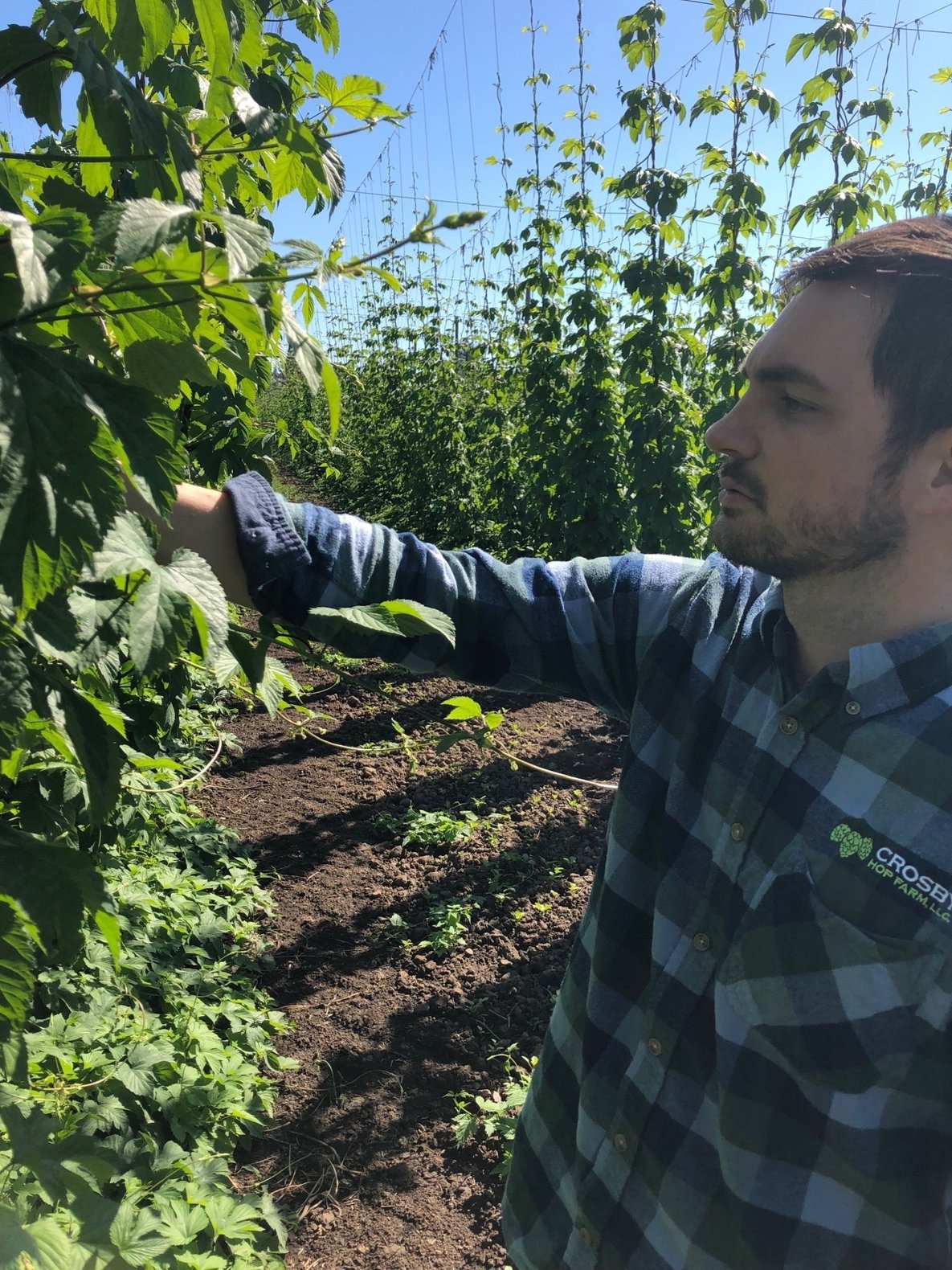
Blake Crosby, CEO of Crosby Hop Farm shares with Beyond the Box a farm report update for crop '18. In April, we talked about pruning and stringing practices which can be found HERE.
Does it look like it’ll be a good year for hop production?
I’d never predict a bumper crop this early, but we’ve had a nice spring and we’re liking what we’re seeing.
I kind of expected the high temperatures. Meteorologists are forecasting temps in the West will continue to be slightly above average. We’re in a warming trend these last few years, which will likely continue. I personally enjoy it and so do the hops, it’s just a matter of having enough water.
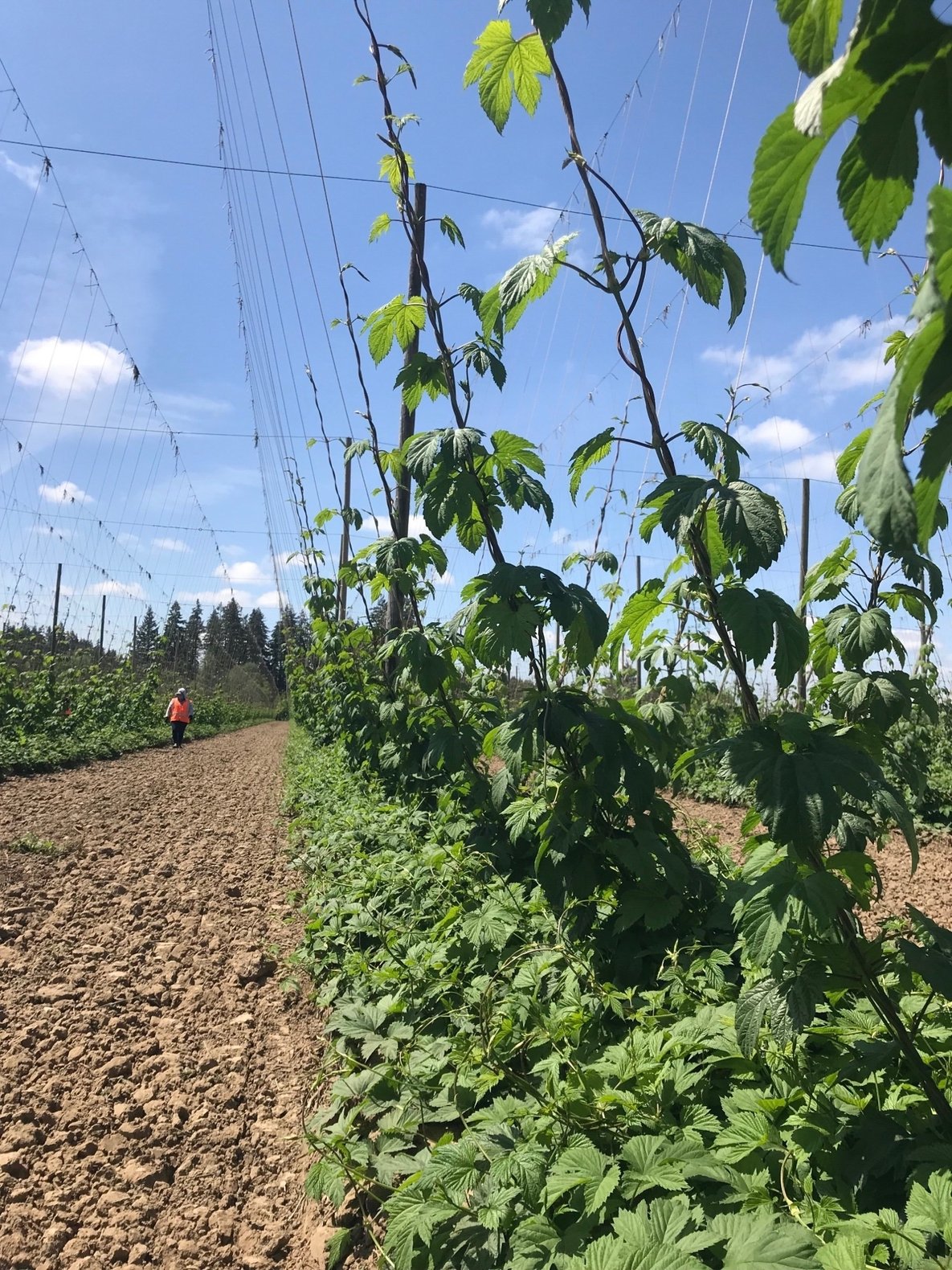
We’re out in the field a little sooner this year irrigating, which normally starts in the middle of June. I’d say we’re a few weeks ahead because we’re having quite a bit of dry weather. Again, if you have good water resources it’s not necessarily a bad thing as hops love the heat, but they do need water to keep them healthy and moving forward. In Oregon, we’re fortunate that we have good water.
In April we talked about pruning and stringing practices. Can you give us an update on the growing season since then?
The next step is training the hop plants, when the crew goes through the fields and manually puts three to four bines on each string. The hops naturally adhere to that string and climb clockwise.
How do you decide specifically to train three to four hop bines?
If you train too many, you get too much vegetation; too few and you might have one that has an issue during the growing season. With three or four bines leading, you can still get a full crop even if one fails.
What’s the typical time-frame for training?
Our ideal training window is the first 10 days of May; things grow really quickly this time of year. Temperatures have been above average in the Willamette Valley, with several days in the 70- or 80-degree range, and hops are inherently vigorous and respond favorably to that heat. Our hops usually climb 18 feet to the top of the canopy or trellis by the 4th of July; we don’t want to over- or undershoot that too much.
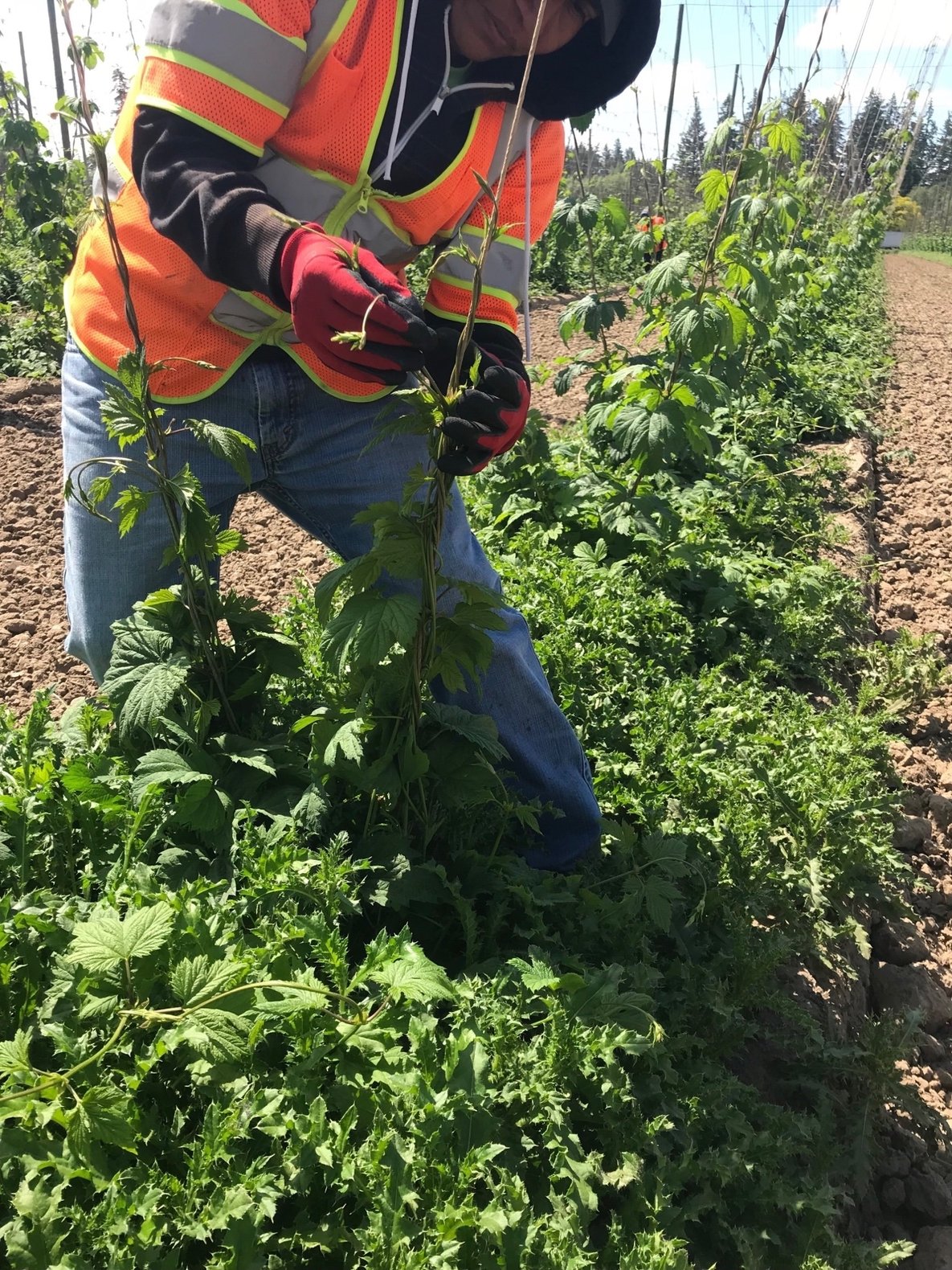
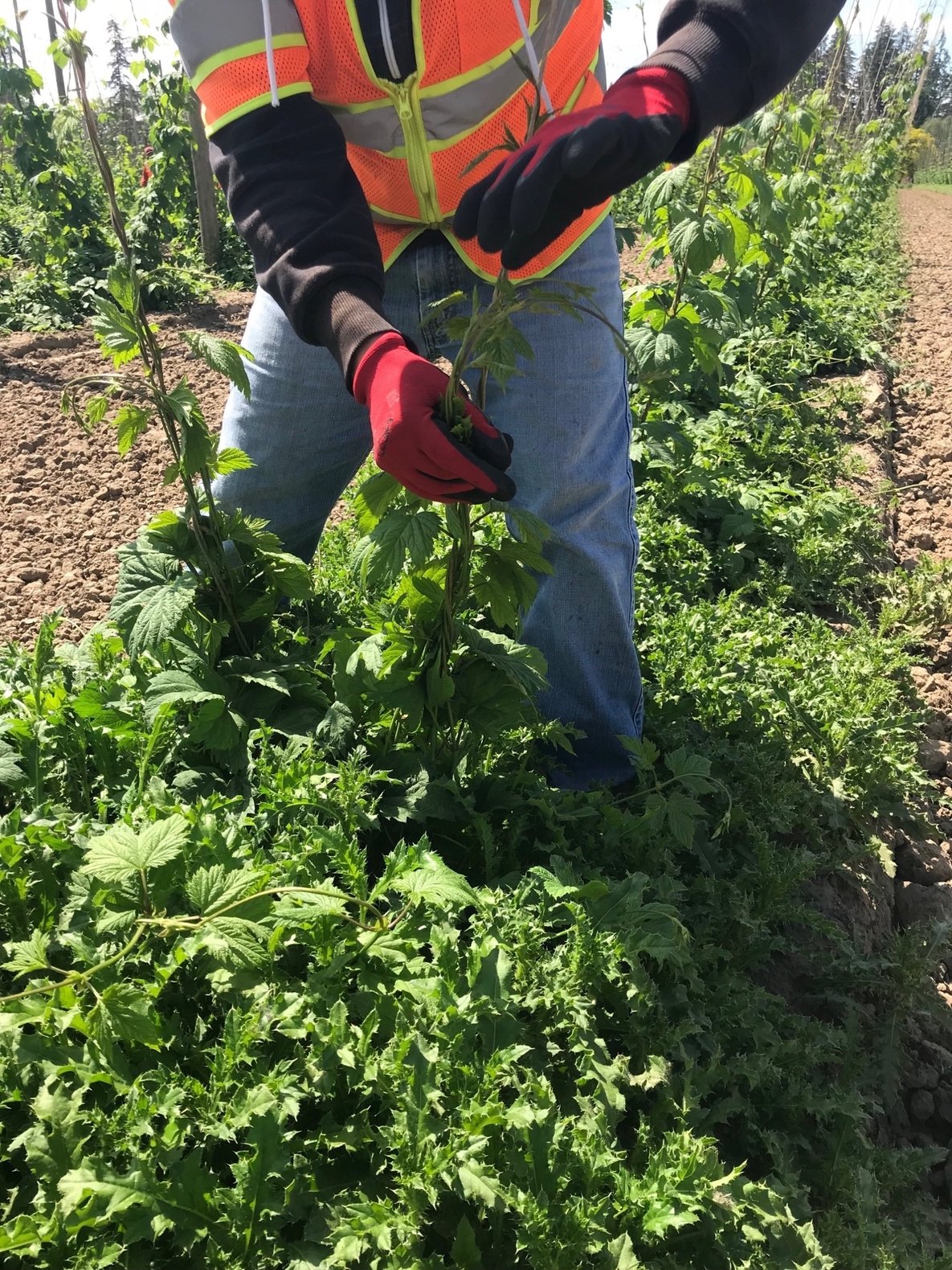 What are the risks of the hops reaching the canopy at the wrong time?
What are the risks of the hops reaching the canopy at the wrong time?
Low yield and overgrowth are the biggest issues. If you train too late and don’t get enough growth, your plant doesn’t reach full potential and you have a lower yield. If you train too early with really vigorous varieties, like Amarillo, they can grow too fast and you end up with an overgrowth, giving you too much plant material by the time you get to harvest.
There’s a certain point of diminishing returns with strong plants. We’re here to harvest and sell hops, not hop vegetation, and if you get too much vegetation it can get really shady. Good size and dense cones are important for yield and sunlight for brewing values.
Another consideration is flowering. If a hop gets trained too early and you have a lot of heat this time of year, certain varieties, like Centennial, are more susceptible to an early flowering. If it gets too tall too soon, the plant gets confused and thinks it’s time to flower, and once it flowers, the plant stops growing.
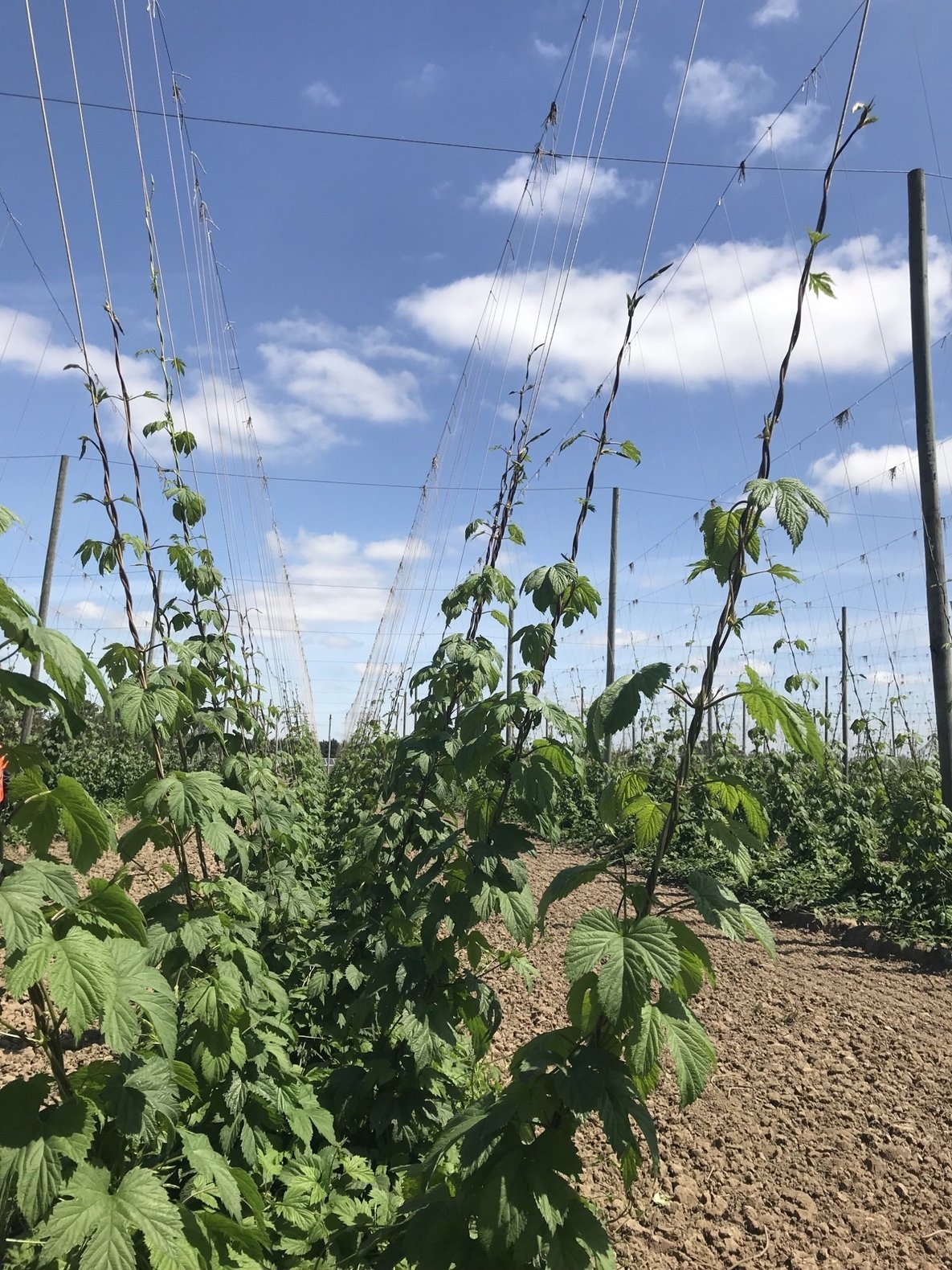
How do you irrigate the plants?
We use drip irrigation on our 420 acres of hops. The transition from sprinklers to drip irrigation—something we converted to fully in about the last 10 years—allows us to focus the water right at the base of the plant and significantly reduce water usage.
When we practiced overhead irrigation with sprinklers, we’d water the whole field. In between the rows of plants, a lot of water gets wasted. Now we have an emitter focused on every plant so we’re not watering bare soil, which also helps with erosion control, since we’re no longer broadcasting a lot of water across the land. And drip irrigation allows us to automate. We no longer have to manually reset irrigation, put sprinklers out and take them back in.
We can apply nutrients, such as nitrogen fertilizers for plant growth, via the drip, which is much more efficient. It’s a lot more sustainable; all those things play into running a better operation and maintaining our 3rd party certifications.
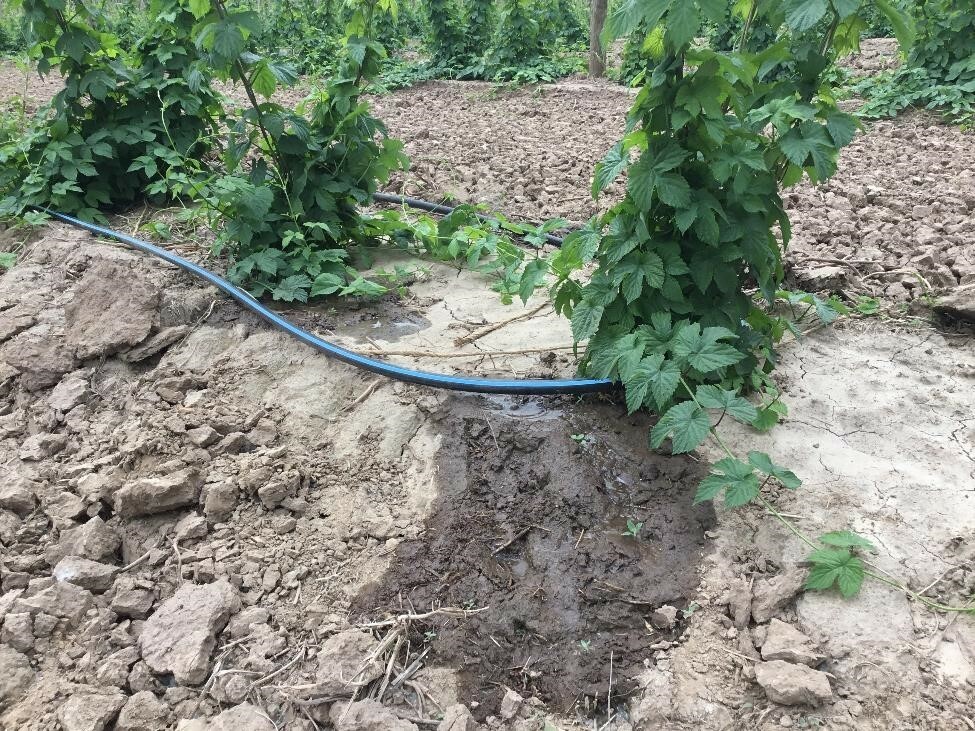
How much have you reduced water usage by converting to drip?
Every 14 feet there is a row of hops planted on about a 3 foot wide strip with a drip line to supply water to the row. Now we’re only watering a concentrated 3-foot span with emitters that release droplets of water regularly, about a half-gallon an hour, which appears to be the rate the plant’s absorbing that water. We’re also trying to figure out if the plants need less water than we assume they do, so we’ve been ratcheting the drip down to find the perfect balance of water to yield. Obviously there’s no reason to use more water than we need, but there’s not a lot of research on that so farmers are having to figure that out on their own.
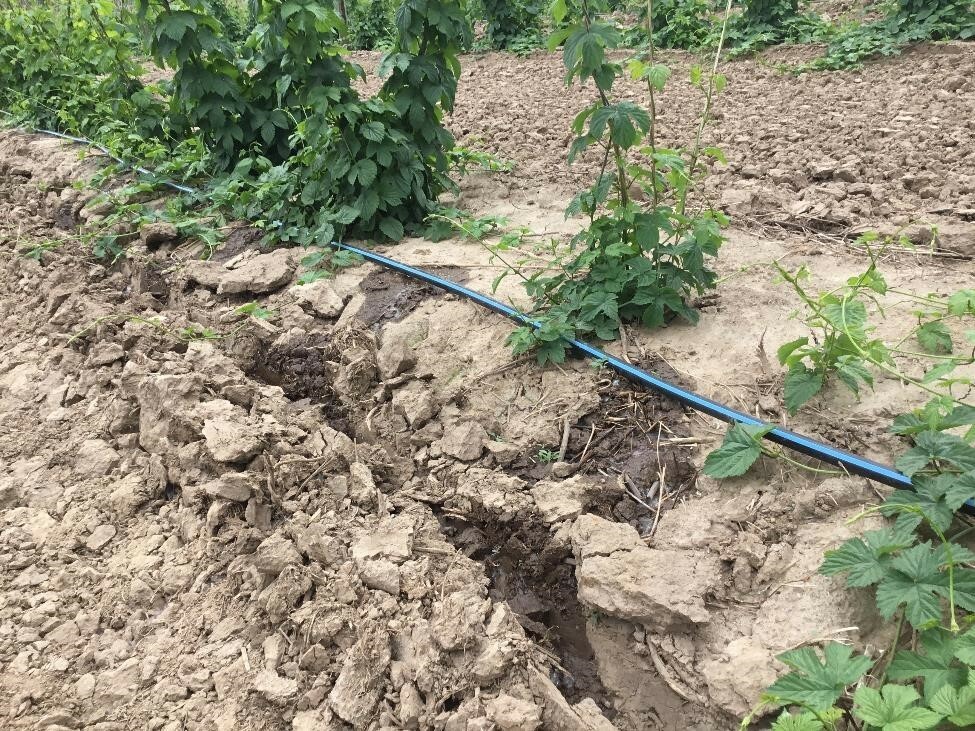
You mentioned certifications. Can you tell me a bit more about why you’re concerned about maintaining those?
We appreciate certifications like Salmon-Safe because they help hold us accountable. It’s nice to have a guideline to go off of. Salmon-Safe practices outline low-risk farm management applications with respect to runoff and watershed getting into streams nearby. Also, having buffer zones is important, so we’re not farming up against streams or entry points to watershed; instead, we have natural barriers.
It’s the same thing with fertilizer, trying to be mindful of usage and application. Nitrogen is a great tool, but if it’s overused, it creates a lot of issues. Excess nitrogen run-off into the watersheds leads to algae proliferation and out-of-whack ecosystems, so we’re trying to incrementally reduce these inputs and see how the plants react. The goal is to maximize production while minimizing inputs achieved through applying the right types and amount of fertilizers at the optimal time. What I like most is that these certifications become part of our culture. We talk about them every day and create awareness—“Is what we’re doing Salmon-Safe?”
Are there any signs of disease causing problems this year?
We always have to watch for downy and powdery mildew this time of year, managing crop and risk. Part of our management practices are scouting and actively managing these mildews with a spray program.
In our area the pressure for downy mildew is lower than normal this year, but for powdery it’s at or slightly above normal. Downy mildew is caused partly by moisture plus reasonably warm temperatures, and in Oregon we often get those in the spring. Powdery mildew, on the other hand, doesn’t seem to be as prone to developing when you have actual, measurable rainfall; instead, powdery likes it when you have high humidity, with hazy, cloudy, warm days. We’ve seen those humid days this year.
There are also more varieties being grown in the region now that have higher susceptibility to powdery mildew, because sometimes those hops are what sell.
Just like when we talked last time about how important good pruning is to reducing pressure in the region, the unfortunate part is that mildew can proliferate and spread to neighbors if some farmers aren’t properly managing their crops. We try to do a good job and influence others to do the same.
Come back next month for more updates and behind-the-scenes insight into Crosby Hop Farm’s operations, and in the meantime check out previous Beyond the Box Q&As with Blake Crosby!